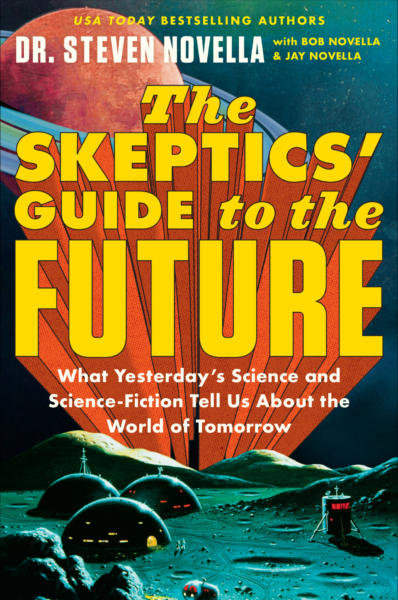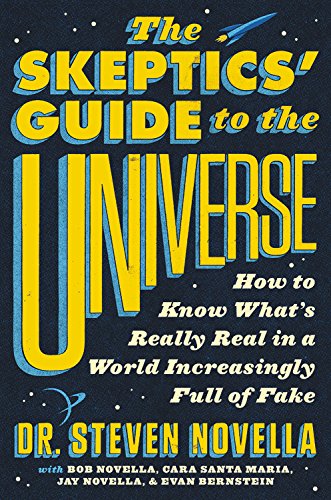Feb
14
2025
 My younger self, seeing that title – AI Powered Bionic Arm – would definitely feel as if the future had arrived, and in many ways it has. This is not the bionic arm of the 1970s TV show, however. That level of tech is probably closer to the 2070s than the 1970s. But we are still making impressive advances in brain-machine interface technology and robotics, to the point that we can replace missing limbs with serviceable robotic replacements.
My younger self, seeing that title – AI Powered Bionic Arm – would definitely feel as if the future had arrived, and in many ways it has. This is not the bionic arm of the 1970s TV show, however. That level of tech is probably closer to the 2070s than the 1970s. But we are still making impressive advances in brain-machine interface technology and robotics, to the point that we can replace missing limbs with serviceable robotic replacements.
In this video Sarah De Lagarde discusses her experience as the first person with an AI powered bionic arm. This represents a nice advance in this technology, and we are just scratching the surface. Let’s review where we are with this technology and how artificial intelligence can play an important role.
There are different ways to control robotics – you can have preprogrammed movements (with or without sensory feedback), AI can control the movements in real time, you can have a human operator, through some kind of interface including motion capture, or you can use a brain-machine interface of some sort. For robotic prosthetic limbs obviously the user needs to be able to control them in real time, and we want that experience to feel as natural as possible.
The options for robotic prosthetics include direct connection to the brain, which can be from a variety of electrodes. They can be deep brain electrodes, brain surface, scalp surface, or even stents inside the veins of the brain (stentrodes). All have their advantages and disadvantages. Brain surface and deep brain have the best resolution, but they are the most invasive. Scalp surface is the least invasive, but has the lowest resolution. Stentrodes may, for now, be the best compromise, until we develop more biocompatible and durable brain electrodes.
Continue Reading »
Jan
28
2025
 On January 20th a Chinese tech company released the free version of their chatbot called DeepSeek. The AI chatbot, by all accounts, is about on par with existing widely available chatbots, like ChatGPT. It does not represent any new abilities or breakthrough in quality. And yet the release shocked the industry causing the tech-heavy stock market Nasdaq to fall 3%. Let’s review why that is, and then I will give some thoughts on what this means for AI in general.
On January 20th a Chinese tech company released the free version of their chatbot called DeepSeek. The AI chatbot, by all accounts, is about on par with existing widely available chatbots, like ChatGPT. It does not represent any new abilities or breakthrough in quality. And yet the release shocked the industry causing the tech-heavy stock market Nasdaq to fall 3%. Let’s review why that is, and then I will give some thoughts on what this means for AI in general.
What was apparently innovative about DeepSeek is that, the company claims, it was trained for only $8 million. Meanwhile ChatGPT 4 training cost over $100. The AI tech industry is of the belief that further advances in LLMs (large language models – a type of AI) requires greater investments, with ChatGPT-5 estimated to cost over a billion dollars. Being able to accomplish similar results at a fraction of the cost is a big deal. It may also mean that existing AI companies are overvalued (which is why their stocks tumbled).
Further, the company that made DeepSeek used mainly lower power graphics chips. Apparently they did have a horde of high end chips (the export of which are banned to China) but was able to combine them with more basic graphics chips to create DeepSeek. Again, this is what is disruptive – they are able to get similar results with lower cost components and cheaper training. Finally, this innovation represents a change for the balance of AI tech between the US and China. Up until now China has mainly been following the US, copying its technology and trailing by a couple of years. But now a Chinese company has innovated something new, not just copied US technology. This is what has China hawks freaking out. (Mr. President, we cannot allow an AI gap!)
Continue Reading »
Jan
13
2025
 My recent article on social media has fostered good social media engagement, so I thought I would follow up with a discussion of the most urgent question regarding social media – should the US ban TikTok? The Biden administration signs into law legislation that would ban the social media app TikTok on January 19th (deliberately the day before Trump takes office) unless it is sold off to a company that is not, as it is believed, beholden to the Chinese government. The law states it must be divested from ByteDance, which is the Chinese parent company who owns TikTok. This raises a few questions – is this constitutional, are the reasons for it legitimate, how will it work, and will it work?
My recent article on social media has fostered good social media engagement, so I thought I would follow up with a discussion of the most urgent question regarding social media – should the US ban TikTok? The Biden administration signs into law legislation that would ban the social media app TikTok on January 19th (deliberately the day before Trump takes office) unless it is sold off to a company that is not, as it is believed, beholden to the Chinese government. The law states it must be divested from ByteDance, which is the Chinese parent company who owns TikTok. This raises a few questions – is this constitutional, are the reasons for it legitimate, how will it work, and will it work?
A federal appeals court ruled that the ban is constitutional and can take place, and that decision is now before the Supreme Court. We will know soon how they rule, but indicators are they are leaning towards allowing the law to take effect. Trump, who previously tried to ban TikTok himself, now supports allowing the app and his lawyers have argued that he should be allowed to solve the issue. He apparently does not have any compelling legal argument for this. In any case, we will hear the Supreme Court’s decision soon.
If the ban is allowed to take place, how will it work? First, if you are not aware, TikTok is a short form video sharing app. I have been using it extensively over the past couple of years, along with most of the other popular platforms, to share skeptical videos and have had good engagement. Apparently TikTok is popular because it has a good algorithm that people like. TikTok is already banned on devices owned by Federal employees. The new ban will force app stores in the US to remove the TikTok app and now allow any further updates or support. Existing TikTok users will continue to be able to use their existing apps, but they will not be able to get updates so they will eventually become unusable.
Continue Reading »
Jan
10
2025
 One of the things I have come to understand from following technology news for decades is that perhaps the most important breakthroughs, and often the least appreciated, are those in material science. We can get better at engineering and making stuff out of the materials we have, but new materials with superior properties change the game. They make new stuff possible and feasible. There are many futuristic technologies that are simply not possible, just waiting on the back burning for enough breakthroughs in material science to make them feasible. Recently, for example, I wrote about fusion reactors. Is the addition of high temperature superconducting material sufficient to get us over the finish line of commercial fusion, or are more material breakthroughs required?
One of the things I have come to understand from following technology news for decades is that perhaps the most important breakthroughs, and often the least appreciated, are those in material science. We can get better at engineering and making stuff out of the materials we have, but new materials with superior properties change the game. They make new stuff possible and feasible. There are many futuristic technologies that are simply not possible, just waiting on the back burning for enough breakthroughs in material science to make them feasible. Recently, for example, I wrote about fusion reactors. Is the addition of high temperature superconducting material sufficient to get us over the finish line of commercial fusion, or are more material breakthroughs required?
One area where material properties are becoming a limiting factor is electronics, and specifically computer technology. As we make smaller and smaller computer chips, we are running into the limits of materials like copper to efficiently conduct electrons. Further advance is therefore not just about better technology, but better materials. Also, the potential gain is not just about making computers smaller. It is also about making them more energy efficient by reducing losses to heat when processors work. Efficiency is arguably now a more important factor, as we are straining our energy grids with new data centers to run all those AI and cryptocurrency programs.
This is why a new study detailing a new nanoconducting material is actually more exciting than it might at first sound. Here is the editor’s summary:
Noncrystalline semimetal niobium phosphide has greater surface conductance as nanometer-scale films than the bulk material and could enable applications in nanoscale electronics. Khan et al. grew noncrystalline thin films of niobium phosphide—a material that is a topological semimetal as a crystalline material—as nanocrystals in an amorphous matrix. For films with 1.5-nanometer thickness, this material was more than twice as conductive as copper. —Phil Szuromi
Continue Reading »
Jan
06
2025
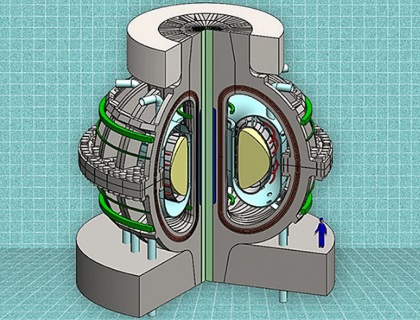 How close are we to having fusion reactors actually sending electric power to the grid? This is a huge and complicated question, and one with massive implications for our civilization. I think we are still at the point where we cannot count on fusion reactors coming online anytime soon, but progress has been steady and in some ways we are getting tatalizingly close.
How close are we to having fusion reactors actually sending electric power to the grid? This is a huge and complicated question, and one with massive implications for our civilization. I think we are still at the point where we cannot count on fusion reactors coming online anytime soon, but progress has been steady and in some ways we are getting tatalizingly close.
One company, Commonwealth Fusion Systems, claims it will have completed a fusion reactor capable of producing net energy by “the early 2030’s”. A working grid-scale fusion reactor within 10 years seems really optimistic, but there are reasons not to dismiss this claim entirely out of hand. After doing a deep dive my take is that the 2040’s or even 2050’s is a safer bet, but this may be the fusion design that crosses the finish line.
Let’s first give the background and reasons for optimism. I have written about fusion many times over the years. The basic idea is to fuse lighter elements into heavier elements, which is what fuels stars, in order to release excess energy. This process releases a lot of energy, much more than fission or any chemical process. In terms of just the physics, the best elements to fuse are one deuterium atom to one tritium atom, but deuterium to deuterium is also feasible. Other fusion elements are simply way outside our technological capability and so are not reasonable candidates.
Continue Reading »
Dec
17
2024
 Some narratives are simply ubiquitous in our culture (every culture has its universal narratives). Sometimes these narratives emerge out of shared values, like liberty and freedom. Sometimes they emerge out of foundational beliefs (the US still has a puritanical bent). And sometimes they are the product of decades of marketing. Marketing-based narratives deserve incredible scrutiny because they are crafted to alter the commercial decision-making of people in society, not for the benefit of society or the public, but for the benefit of an industry. For example, I have tried to expose the fallacy of the “natural is always good, and chemicals are always bad” narrative. Nature, actually, is quite indifferent to humanity, and everything is made of chemicals.
Some narratives are simply ubiquitous in our culture (every culture has its universal narratives). Sometimes these narratives emerge out of shared values, like liberty and freedom. Sometimes they emerge out of foundational beliefs (the US still has a puritanical bent). And sometimes they are the product of decades of marketing. Marketing-based narratives deserve incredible scrutiny because they are crafted to alter the commercial decision-making of people in society, not for the benefit of society or the public, but for the benefit of an industry. For example, I have tried to expose the fallacy of the “natural is always good, and chemicals are always bad” narrative. Nature, actually, is quite indifferent to humanity, and everything is made of chemicals.
Another narrative that is based entirely on propaganda meant to favor one industry and demonize its competition is the notion that organic farming is better for health and better for the environment. Actually, there is no evidence of any nutritional or health advantage from consuming organic produce. Further – and most people I talk to find this claim shocking – organic farming is worse for the environment than conventional or even “factory” farming. Stick with me and I will explain why this is the case.
A recent article in the NYT by Michael Grunwald nicely summarizes what I have been saying for years. First let me explain why I think there is such a disconnect between reality and public perception. This gets back to the narrative idea – people tend to view especially complex situations through simplistic narratives that give them a sense of understanding. We all do this because the world is complicated and we have to break it down. There is nothing inherently wrong with this – we use schematic, categories, and diagrams to simplify complex reality and chunk it into digestible bits. But we have to understand this is what we are doing, and how this may distort our understanding of reality. There are also better and worse ways to do this.
Continue Reading »
Dec
12
2024
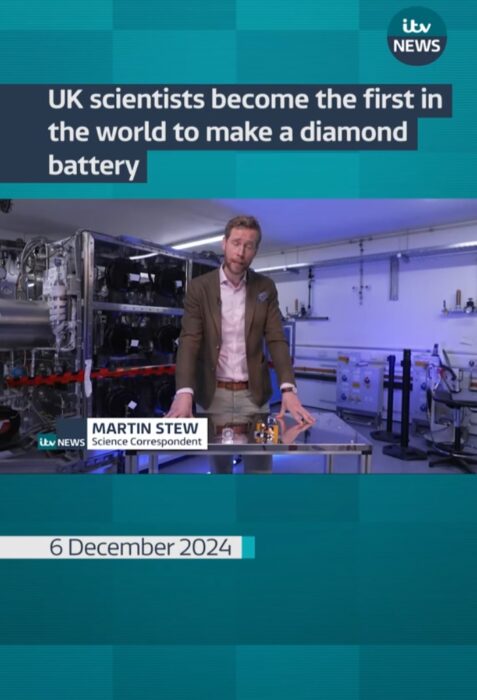 Why does news reporting of science and technology have to be so terrible at baseline? I know the answers to this question – lack of expertise, lack of a business model to support dedicated science news infrastructure, the desire for click-bait and sensationalism – but it is still frustrating that this is the case. Social media outlets do allow actual scientists and informed science journalists to set the record straight, but they are also competing with millions of pseudoscientific, ideological, and other outlets far worse than mainstream media. In any case, I’m going to complain about while I try to do my bit to set the record straight.
Why does news reporting of science and technology have to be so terrible at baseline? I know the answers to this question – lack of expertise, lack of a business model to support dedicated science news infrastructure, the desire for click-bait and sensationalism – but it is still frustrating that this is the case. Social media outlets do allow actual scientists and informed science journalists to set the record straight, but they are also competing with millions of pseudoscientific, ideological, and other outlets far worse than mainstream media. In any case, I’m going to complain about while I try to do my bit to set the record straight.
I wrote about nuclear diamond batteries in 2020. The concept is intriguing but the applications very limited, and cost likely prohibitive for most uses. The idea is that you take a bit of radioactive material and surround it with “diamond like carbon” which serves two purposes. It prevents leaking of radiation to the environment, and it capture the beta decay and converts it into a small amount of electricity. This is not really a battery (a storage of energy) but an energy cell that produces energy, but it would have some battery-like applications.
The first battery based on this concept, capturing the beta decay of a radioactive substance to generate electricity, was in 1913, made by physicist Henty Moseley. So year, despite the headlines about the “first of its kind” whatever, we have had nuclear batteries for over a hundred years. The concept of using diamond like carbon goes back to 2016, with the first prototype created in 2018.
So of course I was disappointed when the recent news reporting on another such prototype declares this is a “world first” without putting it into any context. It is reporting on a new prototype that does have a new feature, but they make it sound like this is the first nuclear battery, when it’s not even the first diamond nuclear battery. The new prototype is a diamond nuclear battery using Carbon-14 and the beta decay source. They make diamond like carbon out of C-14 and surround it with diamond like carbon made from non-radioactive carbon. C-14 has a half life of 5,700 years, so they claim the battery lasts of over 5,000 years.
Continue Reading »
Dec
09
2024
 As I predicted the controversy over whether or not we have achieved general AI will likely exist for a long time before there is a consensus that we have. The latest round of this controversy comes from Vahid Kazemi from OpenAI. He posted on X:
As I predicted the controversy over whether or not we have achieved general AI will likely exist for a long time before there is a consensus that we have. The latest round of this controversy comes from Vahid Kazemi from OpenAI. He posted on X:
“In my opinion we have already achieved AGI and it’s even more clear with O1. We have not achieved “better than any human at any task” but what we have is “better than most humans at most tasks”. Some say LLMs only know how to follow a recipe. Firstly, no one can really explain what a trillion parameter deep neural net can learn. But even if you believe that, the whole scientific method can be summarized as a recipe: observe, hypothesize, and verify. Good scientists can produce better hypothesis based on their intuition, but that intuition itself was built by many trial and errors. There’s nothing that can’t be learned with examples.”
I will set aside the possibility that this is all for publicity of OpenAI’s newest O1 platform. Taken at face value – what is the claim being made here? I actually am not sure (part of the problem of short form venues like X). In order to say whether or not OpenAI O1 platform qualified as an artificial general intelligence (AGI) we need to operationally define what an AGI is. Right away, we get deep into the weeds, but here is a basic definition: “Artificial general intelligence (AGI) is a type of artificial intelligence (AI) that matches or surpasses human cognitive capabilities across a wide range of cognitive tasks. This contrasts with narrow AI, which is limited to specific tasks.”
That may seem straightforward, but it is highly problematic for many reasons. Scientific American has a good discussion of the issues here. But at it’s core two features pop up regularly in various definitions of general AI – the AI has to have wide-ranging abilities, and it has to equal or surpass human level cognitive function. There is a discussion about whether or not how the AI achieves its ends matters or should matter. Does it matter if the AI is truly thinking or understanding? Does it matter if the AI is self-aware or sentient? Does the output have to represent true originality or creativity?
Continue Reading »
Dec
05
2024
 What is Power-to-X (PtX)? It’s just a fancy marketing term for green hydrogen – using green energy, like wind, solar, nuclear, or hydroelectric, to make hydrogen from water. This process does not release any CO2, just oxygen, and when the hydrogen is burned back with that oxygen it creates only water as a byproduct. Essentially hydrogen is being used as an energy storage medium. This whole process does not create energy, it uses energy. The wind and solar etc. are what create the energy. The “X” refers to all the potential applications of hydrogen, from fuel to fertilizer. Part of the idea is that intermittent energy production can be tied to hydrogen production, so when there is excess energy available it can be used to make hydrogen.
What is Power-to-X (PtX)? It’s just a fancy marketing term for green hydrogen – using green energy, like wind, solar, nuclear, or hydroelectric, to make hydrogen from water. This process does not release any CO2, just oxygen, and when the hydrogen is burned back with that oxygen it creates only water as a byproduct. Essentially hydrogen is being used as an energy storage medium. This whole process does not create energy, it uses energy. The wind and solar etc. are what create the energy. The “X” refers to all the potential applications of hydrogen, from fuel to fertilizer. Part of the idea is that intermittent energy production can be tied to hydrogen production, so when there is excess energy available it can be used to make hydrogen.
A recent paper explores the question of why, despite all the hype surrounding PtX, there is little industry investment. Right now only 0.1% of the world’s hydrogen production is green. Most of the rest comes from fossil fuel (gray and brown hydrogen) and in many cases is actually worse than just burning the fossil fuel. Before I get into the paper, let’s review what hydrogen is currently used for. Hydrogen is essentially a high energy molecule and it can be used to drive a lot of reactions. It is mostly used in industry – making fertilizer, reducing the sulfur content of gas, producing industrial chemicals, and making biofuel. It can also be used for hydrogen fuel cells cars, which I think is a wasted application as BEVs are a better technology and any green hydrogen we do make has better uses. There are also emerging applications, like using hydrogen to refine iron ore, displacing the use of fossil fuels.
A cheap abundant source of green hydrogen would be a massive boost to multiple industries and would also be a key component to achieving net zero carbon emissions. So where is all the investment? This is the question the paper explores.
Continue Reading »
Dec
02
2024
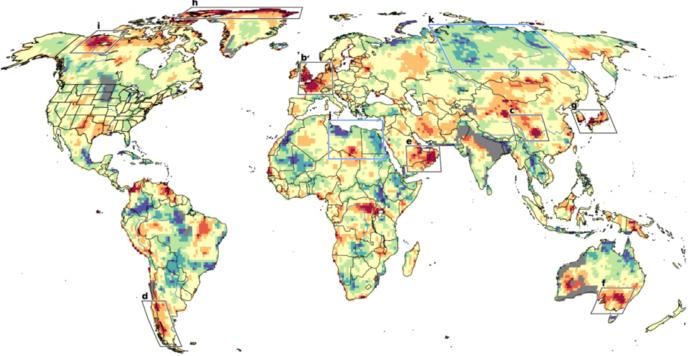 Climate change is a challenging issue on multiple levels – it’s challenging for scientists to understand all of the complexities of a changing climate, it’s difficult to know how to optimally communicate to the public about climate change, and of course we face an enormous challenge in figuring out how best to mitigate climate change. The situation is made significantly more difficult by the presence of a well-funded campaign of disinformation aimed at sowing doubt and confusion about the issue.
Climate change is a challenging issue on multiple levels – it’s challenging for scientists to understand all of the complexities of a changing climate, it’s difficult to know how to optimally communicate to the public about climate change, and of course we face an enormous challenge in figuring out how best to mitigate climate change. The situation is made significantly more difficult by the presence of a well-funded campaign of disinformation aimed at sowing doubt and confusion about the issue.
I recently interviewed climate scientist Michael Mann about some of these issues and he confirmed one trend that I had noticed, that the climate change denier rhetoric has, to some extent, shifted to what he called “doomism”. I have written previously about some of the strategies of climate change denial, specifically the motte and bailey approach. This approach refers to a range of positions, all of which lead to the same conclusion – that we should essentially do nothing to mitigate climate change. We should continue to burn fossil fuels and not worry about the consequences. However, the exact position shifts based upon current circumstances. You can deny that climate change is even happening, when you have evidence or an argument that seems to support this position. But when that position is not rhetorically tenable, you can back off to more easily defended positions, that while climate change may be happening, we don’t know the causes and it may just be a natural trend. When that position fails, then you can fall back to the notion that climate change may not be a bad thing. And then, even if forced to admit that climate change is happening, it is largely anthropogenic, and it will have largely negative consequences, there isn’t anything we can do about it anyway.
This is where doomism comes in. It is a way of turning calls for climate action against themselves. Advocates for taking steps to mitigate climate change often emphasize how dire the situation is. The climate is already showing dangerous signs of warming, the world is doing too little to change course, the task at hand is enormous, and time is running out. That’s right, say the doomists, in fact it’s already too late and we will never muster the political will to do anything significant, so why bother trying. Again, the answer is – do nothing.
Continue Reading »
 My younger self, seeing that title – AI Powered Bionic Arm – would definitely feel as if the future had arrived, and in many ways it has. This is not the bionic arm of the 1970s TV show, however. That level of tech is probably closer to the 2070s than the 1970s. But we are still making impressive advances in brain-machine interface technology and robotics, to the point that we can replace missing limbs with serviceable robotic replacements.
My younger self, seeing that title – AI Powered Bionic Arm – would definitely feel as if the future had arrived, and in many ways it has. This is not the bionic arm of the 1970s TV show, however. That level of tech is probably closer to the 2070s than the 1970s. But we are still making impressive advances in brain-machine interface technology and robotics, to the point that we can replace missing limbs with serviceable robotic replacements.
 On January 20th a Chinese tech company released the free version of their chatbot called DeepSeek. The AI chatbot, by all accounts, is about on par with existing widely available chatbots, like ChatGPT. It does not represent any new abilities or breakthrough in quality. And yet the release shocked the industry causing the tech-heavy stock market Nasdaq to fall 3%. Let’s review why that is, and then I will give some thoughts on what this means for AI in general.
On January 20th a Chinese tech company released the free version of their chatbot called DeepSeek. The AI chatbot, by all accounts, is about on par with existing widely available chatbots, like ChatGPT. It does not represent any new abilities or breakthrough in quality. And yet the release shocked the industry causing the tech-heavy stock market Nasdaq to fall 3%. Let’s review why that is, and then I will give some thoughts on what this means for AI in general. My
My  One of the things I have come to understand from following technology news for decades is that perhaps the most important breakthroughs, and often the least appreciated, are those in material science. We can get better at engineering and making stuff out of the materials we have, but new materials with superior properties change the game. They make new stuff possible and feasible. There are many futuristic technologies that are simply not possible, just waiting on the back burning for enough breakthroughs in material science to make them feasible. Recently, for example, I wrote about fusion reactors. Is the addition of high temperature superconducting material sufficient to get us over the finish line of commercial fusion, or are more material breakthroughs required?
One of the things I have come to understand from following technology news for decades is that perhaps the most important breakthroughs, and often the least appreciated, are those in material science. We can get better at engineering and making stuff out of the materials we have, but new materials with superior properties change the game. They make new stuff possible and feasible. There are many futuristic technologies that are simply not possible, just waiting on the back burning for enough breakthroughs in material science to make them feasible. Recently, for example, I wrote about fusion reactors. Is the addition of high temperature superconducting material sufficient to get us over the finish line of commercial fusion, or are more material breakthroughs required? How close are we to having fusion reactors actually sending electric power to the grid? This is a huge and complicated question, and one with massive implications for our civilization. I think we are still at the point where we cannot count on fusion reactors coming online anytime soon, but progress has been steady and in some ways we are getting tatalizingly close.
How close are we to having fusion reactors actually sending electric power to the grid? This is a huge and complicated question, and one with massive implications for our civilization. I think we are still at the point where we cannot count on fusion reactors coming online anytime soon, but progress has been steady and in some ways we are getting tatalizingly close. Some narratives are simply ubiquitous in our culture (every culture has its universal narratives). Sometimes these narratives emerge out of shared values, like liberty and freedom. Sometimes they emerge out of foundational beliefs (the US still has a puritanical bent). And sometimes they are the product of decades of marketing. Marketing-based narratives deserve incredible scrutiny because they are crafted to alter the commercial decision-making of people in society, not for the benefit of society or the public, but for the benefit of an industry. For example, I have tried to expose the fallacy of the “natural is always good, and chemicals are always bad” narrative. Nature, actually, is quite indifferent to humanity, and everything is made of chemicals.
Some narratives are simply ubiquitous in our culture (every culture has its universal narratives). Sometimes these narratives emerge out of shared values, like liberty and freedom. Sometimes they emerge out of foundational beliefs (the US still has a puritanical bent). And sometimes they are the product of decades of marketing. Marketing-based narratives deserve incredible scrutiny because they are crafted to alter the commercial decision-making of people in society, not for the benefit of society or the public, but for the benefit of an industry. For example, I have tried to expose the fallacy of the “natural is always good, and chemicals are always bad” narrative. Nature, actually, is quite indifferent to humanity, and everything is made of chemicals. Why does news reporting of science and technology have to be so terrible at baseline? I know the answers to this question – lack of expertise, lack of a business model to support dedicated science news infrastructure, the desire for click-bait and sensationalism – but it is still frustrating that this is the case. Social media outlets do allow actual scientists and informed science journalists to set the record straight, but they are also competing with millions of pseudoscientific, ideological, and other outlets far worse than mainstream media. In any case, I’m going to complain about while I try to do my bit to set the record straight.
Why does news reporting of science and technology have to be so terrible at baseline? I know the answers to this question – lack of expertise, lack of a business model to support dedicated science news infrastructure, the desire for click-bait and sensationalism – but it is still frustrating that this is the case. Social media outlets do allow actual scientists and informed science journalists to set the record straight, but they are also competing with millions of pseudoscientific, ideological, and other outlets far worse than mainstream media. In any case, I’m going to complain about while I try to do my bit to set the record straight. As I predicted the controversy over whether or not we have achieved general AI will likely exist for a long time before there is a consensus that we have. The latest round of this controversy comes from Vahid Kazemi from OpenAI.
As I predicted the controversy over whether or not we have achieved general AI will likely exist for a long time before there is a consensus that we have. The latest round of this controversy comes from Vahid Kazemi from OpenAI.  What is
What is  Climate change is a challenging issue on multiple levels – it’s challenging for scientists to understand all of the complexities of a changing climate, it’s difficult to know how to optimally communicate to the public about climate change, and of course we face an enormous challenge in figuring out how best to mitigate climate change. The situation is made significantly more difficult by the presence of a well-funded
Climate change is a challenging issue on multiple levels – it’s challenging for scientists to understand all of the complexities of a changing climate, it’s difficult to know how to optimally communicate to the public about climate change, and of course we face an enormous challenge in figuring out how best to mitigate climate change. The situation is made significantly more difficult by the presence of a well-funded 



